
Warsaw Ghetto was the largest of the Nazi ghettos during World War II. It was established in November 1940 by the German authorities within the new General Government territory of occupied Poland. At its height, as many as 460,000 Jews were imprisoned there, in an area of 3.4 km2 (1.3 sq mi), with an average of 9.2 persons per room, barely subsisting on meager food rations. From the Warsaw Ghetto, Jews were deported to Nazi concentration camps and mass-killing centers. In the summer of 1942, at least 254,000 Ghetto residents were sent to the Treblinka extermination camp during Großaktion Warschau under the guise of "resettlement in the East" over the course of the summer. The ghetto was demolished by the Germans in May 1943 after the Warsaw Ghetto Uprisings had temporarily halted the deportations. The total death toll among the prisoners of the Ghetto is estimated to be at least 300,000 killed by bullet or gas, combined with 92,000 victims of starvation and related diseases, the Warsaw Ghetto Uprising, and the casualties of the final destruction of the Ghetto.
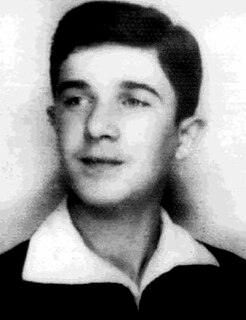
Mordechai Anielewicz was the leader of the Jewish Fighting Organization, which led the Warsaw Ghetto Uprising; the largest Jewish insurrection during the Second World War, which inspired further rebellions in both ghettos and extermination camps. His character was engraved as a symbol of courage and sacrifice, and to this day his image represents Jewish resistance during the Holocaust.
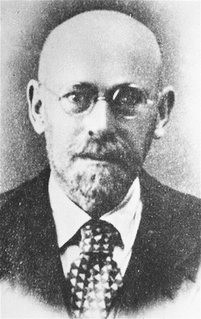
Janusz Korczak, the pen name of Henryk Goldszmit, was a Polish Jewish educator, children's author and pedagogue known as Pan Doktor or Stary Doktor. After spending many years working as a principal of an orphanage in Warsaw, he refused sanctuary repeatedly and stayed with his orphans when the entire population of the institution was sent from the Ghetto to the Treblinka extermination camp by the Nazis, during the Grossaktion Warschau of 1942.

Adam Czerniaków was a Polish engineer and senator who was head of the Warsaw Ghetto Jewish Council (Judenrat) during World War II. He committed suicide on 23 July 1942 by swallowing a cyanide pill, a day after the commencement of mass extermination of Jews known as the Grossaktion Warsaw.
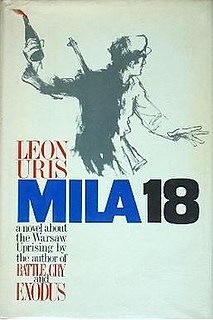
Mila 18 is a novel by Leon Uris set in German-occupied Warsaw, Poland, before and during World War II. Mila 18 debuted at #7 on The New York Times Best Seller List and peaked at #2 in August 1961. Leon Uris's work, based on real events, covers the Nazi occupation of Poland and the atrocities of systematically dehumanising and eliminating the Jewish people of Poland. The name "Mila 18" is taken from the headquarters bunker of Jewish resistance fighters underneath the building at ulica Miła 18. The term ghetto takes on a clearer meaning as the courageous Jewish leaders fight a losing battle against not only the Nazis and their henchmen, but also profiteers and collaborators among themselves. Eventually, as the ghetto is reduced to rubble, a few courageous individuals with few weapons and no outside help assume command of ghetto defence, form a makeshift army and make a stand.

In Jewish mythology, a dybbuk is a malicious possessing spirit believed to be the dislocated soul of a dead person. It supposedly leaves the host body once it has accomplished its goal, sometimes after being exorcised.

The Warsaw Ghetto Uprising was the 1943 act of Jewish resistance in the Warsaw Ghetto in German-occupied Poland during World War II to oppose Nazi Germany's final effort to transport the remaining ghetto population to Majdanek and Treblinka death camps.
Ibbur, is one of the transmigration forms of the soul and has similarities with Gilgul neshamot. Ibbur is always good or positive, while dybbuk, is negative. Ibbur is the most positive form of possession, and the most complicated. It happens when a righteous soul decides to occupy a living person's body for a time, and joins, or spiritually "impregnates" the existing soul. Ibbur is always temporary, and the living person may or may not know that it has taken place. Often the living person has graciously given consent for the Ibbur. The reason for Ibbur is always benevolent—the departed soul wishes to complete an important task, to fulfil a promise, or to perform a mitzvah that can only be accomplished in the flesh. In Lurianic Kabbalah, ibbur occurs when an incomplete soul which cannot achieve tikun is completed by the addition of the soul of a tzadik, or spiritual master. Luria believed this to be possible even whilst the possessor was still alive.

The Pianist is a 2002 biographical war drama film produced and directed by Roman Polanski, with a script by Ronald Harwood, and starring Adrien Brody. It is based on the autobiographical book The Pianist (1946), a Holocaust memoir by the Polish-Jewish pianist and composer Władysław Szpilman, a Holocaust survivor. The film was a co-production of France, the United Kingdom, Germany, and Poland.
There is a wide range of ways in which people have represented the Holocaust in popular culture.

JankielWiernik (1889–1972) was a Polish-Jewish Holocaust survivor who was an influential figure in the Treblinka extermination camp resistance. He had been forced to work as a Sonderkommando slave worker there, where an estimated 700,000-900,000 people, mostly Jews were murdered. After his escape during the uprising of 2 August 1943, Wiernik reached Warsaw and joined the resistance. He also wrote a clandestine account of the camp's operation, A Year in Treblinka, which was copied and translated for printing in London and the US in English and Yiddish.
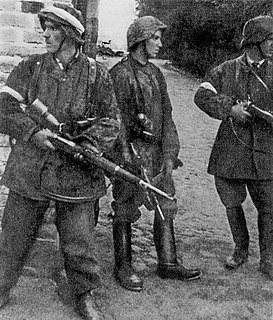
Henryk Iwański (1902-1978), nom de guerre Bystry, was a member of the Polish resistance during World War II. He is known for leading one of the most daring actions of the Armia Krajowa in support of the Warsaw Ghetto Uprising, however later research cast doubts on the veracity of his claims. For his assistance to the Polish Jews Iwański was bestowed the title of the Righteous Among the Nations by Yad Vashem in Jerusalem in 1964.

Milkweed is a 2003 young adult historical fiction novel by American author Jerry Spinelli. The book is about a boy in Warsaw, Poland in the years of World War II during the Holocaust. Over time he is taken in by a Jewish group of orphans and he must avoid the Nazis while living on the streets with other orphans. The story narrator is the boy in the future living in America recalling his past experiences. Despite being a historical fiction novel, Doctor Korczak, a minor character in the story is based on a real person named Janusz Korczak.

Richard Zimler is a best-selling author. His books, which have earned him a 1994 National Endowment of the Arts Fellowship in Fiction and the 1998 Herodotus Award, have been published in many countries and translated into more than 20 languages.

Jewish ghettos in Europe were neighbourhoods of European cities in which Jews were permitted to live. In addition to being confined to the ghettos, Jews were placed under strict regulations as well as restrictions in many European cities. The character of ghettos fluctuated over the centuries. In some cases, they comprised a Jewish quarter, the area of a city traditionally inhabited by Jews. In many instances, ghettos were places of terrible poverty and during periods of population growth, ghettos had narrow streets and small, crowded houses. Residents had their own justice system. Around the ghetto stood walls that, during pogroms, were closed from inside to protect the community, but from the outside during Christmas, Pesach, and Easter Week to prevent the Jews from leaving at those times.

POLIN Museum of the History of Polish Jews is a museum on the site of the former Warsaw Ghetto. The Hebrew word Polin in the museum's English name means either "Poland" or "rest here" and relates to a legend about the arrival of the first Jews to Poland.
The Forty Days of Musa Dagh is a 1933 novel by the Austrian-Jewish author Franz Werfel. Based on the events at Musa Dagh in 1915 during the Armenian genocide in the Ottoman Empire, the book played a role in organizing the Jewish resistance under Nazi rule. It was passed from hand to hand in Jewish ghettos in Nazi-occupied Europe, and it became an example and a symbol for the Jewish underground throughout Europe. The Holocaust scholars Samuel Totten, Paul Bartrop and Steven L. Jacobs underline the importance of the book for many of the ghettos' Jews: "The book was read by many Jews during World War II and was viewed as an allegory of their own situation in the Nazi-established ghettos, and what they might do about it."
The Last Kabbalist of Lisbon is a novel by American-Portuguese author Richard Zimler. It was first published in Portuguese translation in 1996, after having been rejected by many American publishers. After reaching No. 1 on the Portuguese bestseller list, the book found success in other countries and has been a bestseller in 13, including the United States, the United Kingdom, Italy, Brazil and Australia. It has been published in 23 languages.
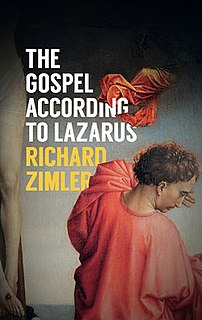
The Gospel According to Lazarus is a 2019 novel by Richard Zimler.
Alice Joyce Kahn is an American nurse practitioner and humorist who popularized the slang word "yuppie", describing young urban professionals, and also the term "Gourmet Ghetto", naming an influential retail neighborhood of Berkeley, California. Kahn was a regular contributor to East Bay Express, a columnist at the San Francisco Chronicle, and a syndicated columnist at the Los Angeles Times. She has also written for Mother Jones magazine and the San Jose Mercury News. A self-professed "sit-down comic" noted for her "Jewish-American wit", her understated brand of humor has been compared to that of Erma Bombeck. The Chicago Reader commented on her liberal political viewpoint, writing that she was "Joan Rivers with a social conscience."















